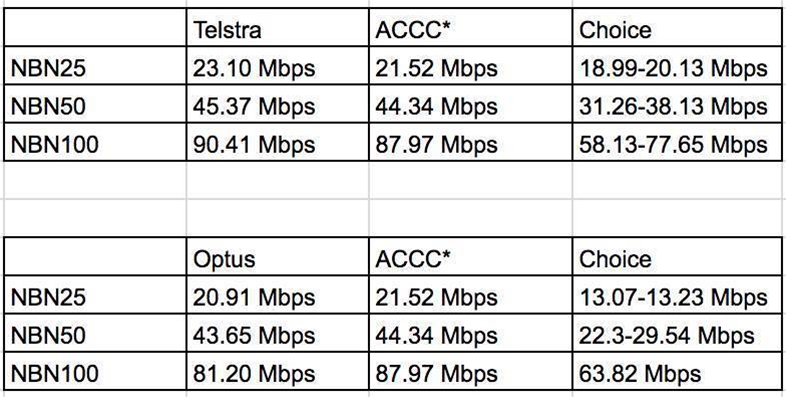Telstra has joined Optus in starting to publish “average” NBN speed figures across a sample of users in a bid to combat numbers being produced by external monitoring schemes.

The incumbent telco has raised the bar on this type of reporting by publishing monthly updates of its average data, compared to Optus which is producing its numbers once every three months.
Average speeds are the standard way that NBN speed monitoring programs run by the Australian Competition and Consumer Commission (ACCC) and Choice present data.
By comparison, most retail service providers publish a different speed statistic - “typical” evening peak speeds - which the ACCC demanded as a way to show users how congested their services might be at the busiest time of the day.
The ACCC is meant to be reviewing its guidelines for advertising NBN speeds this year, and that review process will have increased importance with now duelling typical and average measures in use.
Both Telstra and Optus characterise their average speed numbers in similar terms.
Optus says its numbers are “calculated over a two week period ending on the date of publication and is the average speed experienced by a representative group of customers between 7pm and 11pm.”
It has never revealed the makeup of its representative group.
Telstra is slightly more forthcoming on how conditional its average numbers are, noting they indicate speeds “that around 90 percent of our NBN customers (excluding fixed wireless customers and those FTTB/N/C customers with a limited maximum line speed)” on a 50Mbps tier plan see “between 7pm-11pm”.
Telstra’s average peak speed numbers are higher than recorded in either the ACCC or Choice monitoring schemes.
Optus’ average numbers also significantly outperform those being reported by Choice, but are a few megabits per second less than the ACCC number.

(Source: Telstra and Optus' self-reported numbers, ACCC, Choice. Compiled by iTnews)
It is worth noting the ACCC number is an aggregate across all RSPs , whereas the Choice number is specific to the RSP, and also provides a breakdown (where available) of average speeds per access technology. Choice, therefore, offers the most granular average number.
If the Telstra sample is representative, its average peak speed on the top NBN100 tier would eclipse anything else on offer in the market (however, its performance on the lower - more popular - tiers places it well in the mix in the jostle to sign up new customers).


_(20).jpg&h=140&w=231&c=1&s=0)

.png&h=140&w=231&c=1&s=0)




_(26).jpg&w=100&c=1&s=0)

 iTnews Executive Retreat - Security Leaders Edition
iTnews Executive Retreat - Security Leaders Edition












_(1).jpg&h=140&w=231&c=1&s=0)



